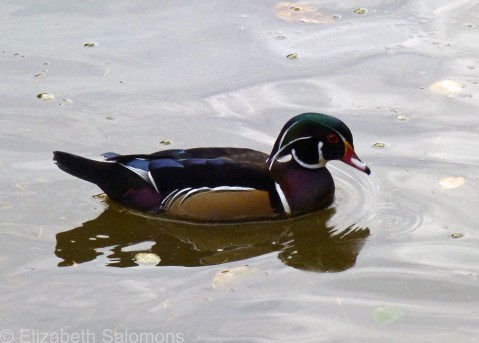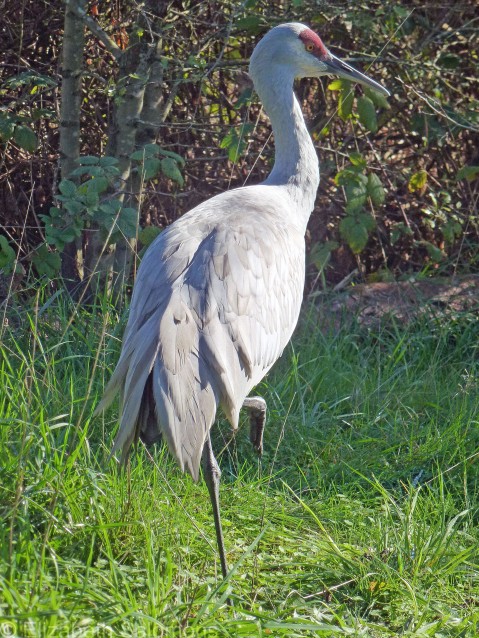Strawbabies

When I was in high school, the end of June meant the end of the school year and the start of strawberry season. My mother would throw the ice cream pails into the trunk of the car and off we went ― her and my siblings and I ― to one of the U-pick farms on nearby Westham Island. A few hours of picking (and snacking) later, we’d head home with our haul of luscious red berries. Mom would get to work making jam, while we would help her out by eating a handful of berries every time we wandered through the kitchen. My (then) baby brother called them strawbabies, and the name stuck.
BC berries are so tasty that I became a strawberry snob. To this day, I refuse to eat the pale and tasteless California strawberries that are sold in BC the rest of the year.
One final note: If there was ever any doubt that our climate is changing, the shifting of strawberry season by a whole month is enough evidence for me. Strawberry season now starts every year around the end of May and is already over by the last week of June.
Through My Lens: Fraser River at Deas Island Park

Here’s another view of the Fraser River. This photo was taken from Deas Island Park in Delta, near the mouth of the Fraser River. I’m looking west. Somewhere beneath all that water is the George Massey Tunnel, which is how Highway 99 (the highway that goes from Vancouver to the US border) crosses the Fraser River. The tunnel is going to be replaced by a 10-lane bridge sometime in the near future.
Which means this view of the Fraser River will be completely transformed.
Reifel Bird Sanctuary
A couple of Sundays ago, I called up a friend.
“The snow geese are in town!” I said. “Let’s go check them out.”
And off we went.

Our destination was the Reifel Bird Sanctuary on Westham Island at the mouth of the Fraser River. My friend and her daughter are frequent visitors; they came well prepared with little bags of bird seed ― one for each of us. (You can also buy seed at the entrance for a dollar a bag.)

Within minutes of our arrival, we had Black-capped Chickadees eating out of our hand.


We saw a lot of waterfowl. Like these Wood Ducks.



And these American Wigeons.


American Robins, too.

There were Sandhill Cranes.


And my old friend, the Great Blue Heron, was there.

We did see our snow geese (a gaggle of them), congregated on a muddy field (as they are wont to do) just outside of the sanctuary. They attracted numerous photographers (a clique of them), all of us gathered on the road that bordered the field, cameras at the ready.

The Lesser Snow Geese spend their summers on Wrangel Island in the Russian Arctic and their winters in the Fraser and Skagit River estuaries. My friend lives just on the other side of the river from the bird sanctuary, and she told me the snow geese are frequent visitors to her daughter’s school. The kids have to be kept indoors on days when the snow geese decide they want to hang out on the school’s playing field. (Every Canadian knows what Snow Days are, but who knew there were Snow Geese Days?)

The George C. Reifel Migratory Bird Sanctuary consists of 300 hectares of marshland in the Fraser River Estuary and is a key stop for birds migrating along the Pacific Flyway. Dykes are used as walkways, giving visitors access to much of the sanctuary, including bird blinds and an observation tower. More than 250 species of birds have been spotted here; prime time viewing is during the fall and spring migration. And with an admission fee of $5 per adult and $3 per child (annual memberships also available), it’s a cheap day out.

One last tip: Pay attention to the birders with the supersize camera lenses. Chances are those lenses are pointed at something you want to see.
Snowy Owls at Boundary Bay

One sunny afternoon a couple of week ago, I headed down to Boundary Bay with my camera. A colony of Snowy Owls has taken up residence on the shores of the bay this winter. They got a lot of media attention when they arrived last December, and I wanted to see them for myself.

Apparently the owls make a regular appearance on the bay every four or five years. Their migration from their home north of 60° to all points south is linked to the lemming population, which makes up 90 percent of their diet. When the lemming population declines, the snowies head south.

The last time they were seen at Boundary Bay was in 2007.
 This year, however, the Snowy Owls migrated south in unprecedented numbers. Scientists think the large migration is the result of an abundance of lemmings during the last breeding season, encouraging a one-year “chick boom.” Breeding pairs raised as many as seven chicks, when normally they raise only two.
This year, however, the Snowy Owls migrated south in unprecedented numbers. Scientists think the large migration is the result of an abundance of lemmings during the last breeding season, encouraging a one-year “chick boom.” Breeding pairs raised as many as seven chicks, when normally they raise only two.
But then, come winter, there were simply too many owls and not enough lemmings. Thousands of snowies, mostly young and male, have left the north in search of food; they’ve been seen as far south as Oklahoma.
 About 28 are at Boundary Bay, while many others have been spotted all over the Lower Mainland. I counted eight owls myself.
About 28 are at Boundary Bay, while many others have been spotted all over the Lower Mainland. I counted eight owls myself.
Snowy Owls are up to 70 cm tall and can have a wingspan of about 150 cm, making them one of the largest species of owls.
I haven’t been to Boundary Bay in, well, decades. I’d forgotten how beautiful it is.

The bay is enclosed by Point Roberts, Washington, and Tsawwassen, BC, on the west; Blaine, Washington, and White Rock, BC, on the east; and Delta, BC, to the north.

It’s an important stop on the Pacific Flyway. I had no idea how serious some birders can be. There were fellows out there in full camouflage, with camera lenses as long as my arm. I wouldn’t have minded a longer lens myself, but, even so, it was a great photo opportunity and I intend to go back.

